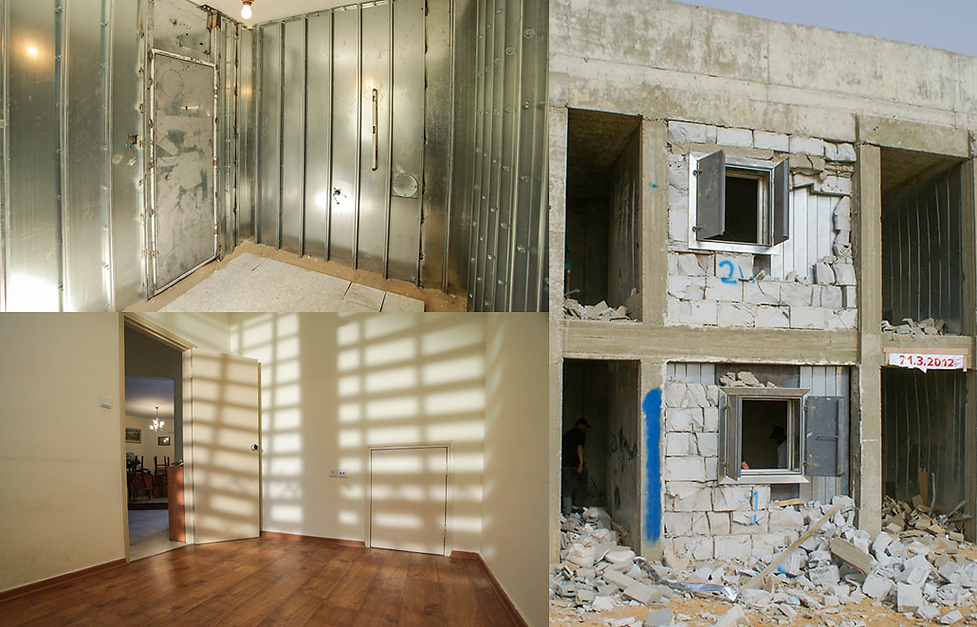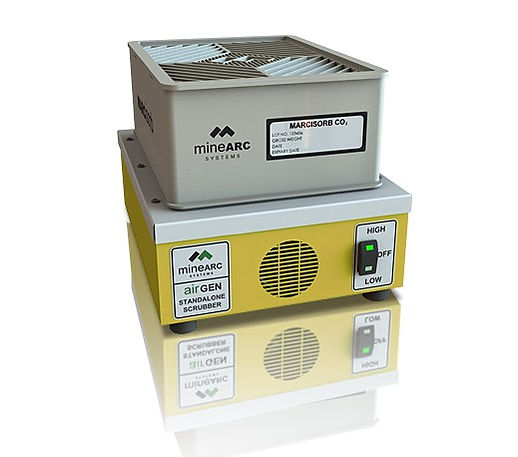Article: How to Convert a Room or a structure into a protected shelter
Author: Andrey Shpak | LinkedIn >

WHAT IS A SHELTER
Shelters are defined as structures or protected spaces designed to protect people and equipment from various threats like blast effects, ballistic fragments, and CBRN contamination, as well as various threats related to war, terror attacks, natural and manmade disasters, and more.
In most cases, shelters are designed for a specific purpose and threats that can be defined by the government or industry standards or by private users with unique requirements. As there is always a consideration of budget, not every shelter and protective shelter can have the highest level of protection possible.
The consideration to determine the purpose and the protection level of the shelter can be the strategic importance, size, location, specific threats, and other criteria.
For example, in case of a war, military facilities, critical infrastructure, and other strategic facilities will most likely be targeted and for that reason need to have a higher level of protection for maintaining the operational capabilities.
HOW TO SELECT THE MOST SUITBLE SPACE FOR CONVERSION TO A SHELTER
The protective space can be arranged almost in any space or room but it is always better to locate it initially in the most protected part which can be underground storage or parking space, a staircase in the building, an internal room in the apartment, or any structure with the basic requirement for installation of the protective equipment.

It is important to mention that the level of protection that can be reached at the end, directly depend on the initial structural parameters of the space chosen initially. For example, underground spaces or internal rooms without external walls will be probably easier to protect.
Other considerations for choosing the protected space are the threats and the response time according to the threat. A shelter located in or close to the house will be easier and faster to approach as in case of an emergency the response time can be several seconds to minutes.
KEY ELEMENTS THAT ARE CRUCIAL FOR CONVERTING A SPACE TO A SHELTER
-
Air/Gas tightness
STRUCTURAL REINFORCEMENT

As a base for a protected space, it is always preferred to choose an underground or internal space in the building with load-bearing concrete walls. As an example, a staircase in a building with several floors can be the strongest part of the building.
Based on the structure evaluation there can be several options to reinforce the existing structure, walls, and ceilings to ensure resistance to blast wave pressure, as well as provide additional strength to the building against earthquake shocks and protect the internal space in case of building collapse on top or side of the protected area.
BLAST AND BALLISTIC PROTECTION

Depending on the shelter location and wall/ceiling structure there is some level of protection provided. But today there are various modern solutions that can be integrated in existing structures to provide an additional layer of protection from blast and ballistic threats:
GAS/AIR TIGHTNESS
When we want to protect people from chemical, biological, radiological, and nuclear threats or any type of air contamination, dangerous gases, and materials, or in case there is no possibility of a safe supply of regular external fresh air we would need to ensure that the shelter is gastight, and no external air or materials will enter the protected space.
AIR SUPPLY & MANAGEMENT
When we are talking about the air supply and management it is important to determine the main options (modes) of operations possible by choosing the relevant one of several of them for the shelter will determine the needed equipment.
Optional Air Supply Modes in Shelters:
1. Ventilation – in this mode the blast doors and hatches are closed for protection from the blast wave effect but there is no threat of CBRN contamination outside. The ventilation blowers are pushing the air into the shelter creating air circulation. The air is usually filtered only by coarse dust filters (pre-filters) in this mode.
2. CBRN filtration – when there is a risk of chemical, biological, radiological, and nuclear (CBRN) event or contamination of the external air, the shelter doors and hatches are closed and sealed, and the external air is purified by CBRN filtration systems prior to entering the shelter. The shelter must be airtight to create positive air pressure (overpressure) inside which helps to prevent contaminated air from entering the shelter.

3. Complete isolation mode (no external air supply) – this mode is usually used at the beginning of the event when it is not clear the status, and later in case of a high concentration of contaminants outside or their composition can’t be effectively treated by the air filtration system. Other scenarios can include flooding by water or strong fire outside. In this mode, the air supply and the overpressure need to be maintained by other means as there is no possibility to provide fresh air from outside.
As we know, the breathing process has two main stages, in a simplified example people inhale oxygen-rich air and exhale air with higher content of carbon dioxide (CO2). Today in normal environment outdoor CO2 levels tend to average around 400 ppm and the levels indoors can increase far beyond that, upwards of 1000 ppm or even 2000 ppm but in high levels of over 5000 ppm can immediately become dangerous to health and life, and anyway deteriorate the operative ability of persons inside the shelter. In normal conditions the levels of oxygen and carbon dioxide are stable, but the problem starts when we need to maintain such conditions in airtight spaces with no external air supply. Immediately after switching the shelter into a close-up mode the level of oxygen will be getting lower and the level of carbon dioxide inside the shelter starts to rise because the air filtration is not used, and no fresh air is entering the shelter. In addition, the shelter overpressure shall be maintained, what’s creates the need to compensate for the loss of air volume.

OPTIONAL SOLUTIONS FOR UPGRADE OF SPACE TO SHELTER:
1. Structural Reinforcement
-
Straitening the existing walls with concrete supports and an extra layer
-
Installation of internal metal or composite frames and panels
2. Blast and Ballistic Protection
-
Integration of Blast and ballistic-resistant composite frames, liners, fabrics, and panels.
-
Integration of Blast-resistant door/s
-
Integration of Blast valves for ventilation or gastight valves
-
Installation of special equipment for protection of different openings (electricity, water, ventilation, etc.)
3. Air/Gas tightness
-
Ensuring gas tightness and sealing of all openings of the external walls (doors, windows, ventilation opening, electricity and communication cables openings etc.)
-
Gastight Valves and equipment for maintaining gastight conditions.
-
Installation inside blast-protected space of internal gastight structures or tents
4. Air Management
-
Ventilation low-pressure blowers or air handling units (AHU)
-
CBRN Filtration Systems and valves for controlling the airflow and overpressure
-
CO2 removal system (Scrubbers)
-
Compressed air supply systems for maintaining overpressure
-
Oxygen O2 supply system
-
Air monitoring and control systems
-
Gastight Valves and equipment for maintaining gastight conditions
Atmas is offers a complete range of solutions including design, consultancy, equipment selection, supply and integration sells and full scope of support for new, modernization and retrofitting projects. For more information contact us at info@atmas-tech.com